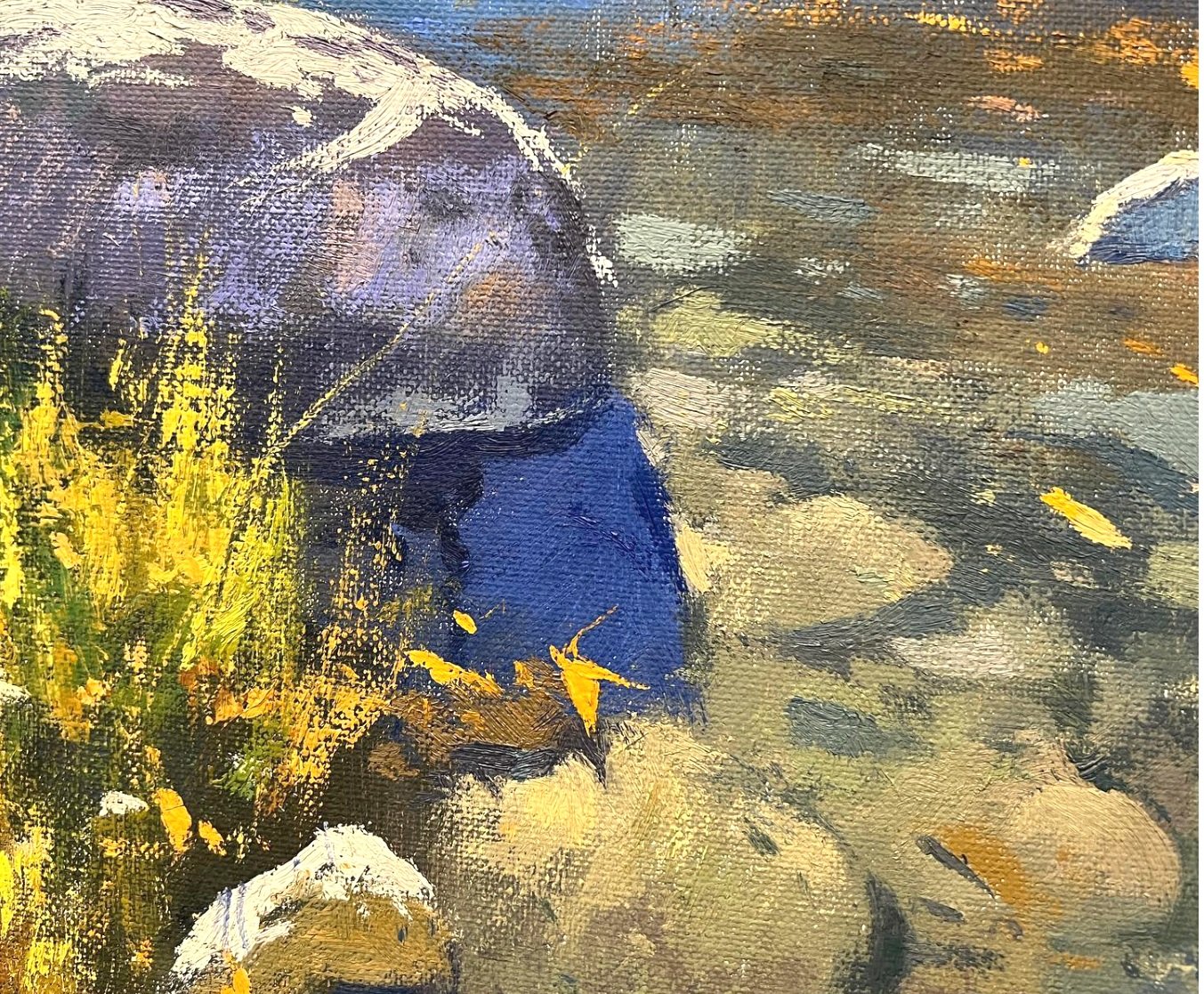Muted Colors, Softer Edges
The big, overarching picture with painting rocks underwater is edges will be softer and colors will be muted. These are the two big things that are happening. Anything above water, maybe a rock sticking out of the water, will have a more vivid color and harder edges. As it dips below the water, it gets softer and muted. I think the problem is we look at rocks underwater literally. Yet, it is really just a bunch of shapes. It is no different than what is above the water. Don’t overcomplicate it. Water is like a mirror in a way. It does reflect things above it. But, once you have elements underneath it like rock, it really changes the game a bit.
We tend to want to paint rocks underwater rather than shapes, colors, values, and edges. There are two camps here. If you look at them as rocks underwater in your head, then there is a good chance that painting this area will fail. If you look at them as shapes, values, colors, edges, etc., there is a much better success rate at that.
“The big, overarching picture with painting rocks underwater is edges will be softer and colors will be muted.”
Again, it is more of a mental thing than anything. I really believe your success rate will increase once you stop seeing them as rocks. Often times we complicate things for ourselves, rather than also observing and sitting there on the side of a creek and doing a few sketches and trying to figure it out at the moment from life.
Register today for my free webinar, “4 Key Mistakes to Avoid when Painting Rocks (and what to do instead)”:

